The garden created by a forgotten genius of the 1920s, rescued from 'a sorry state of neglect to a level of quality it has not known for over 50 years'
George Dillistone’s original Arts-and-Crafts design at Knowle House, East Sussex, has been lovingly restored and updated with contemporary planting. George Plumptre tells more; photography by Clive Nichols.
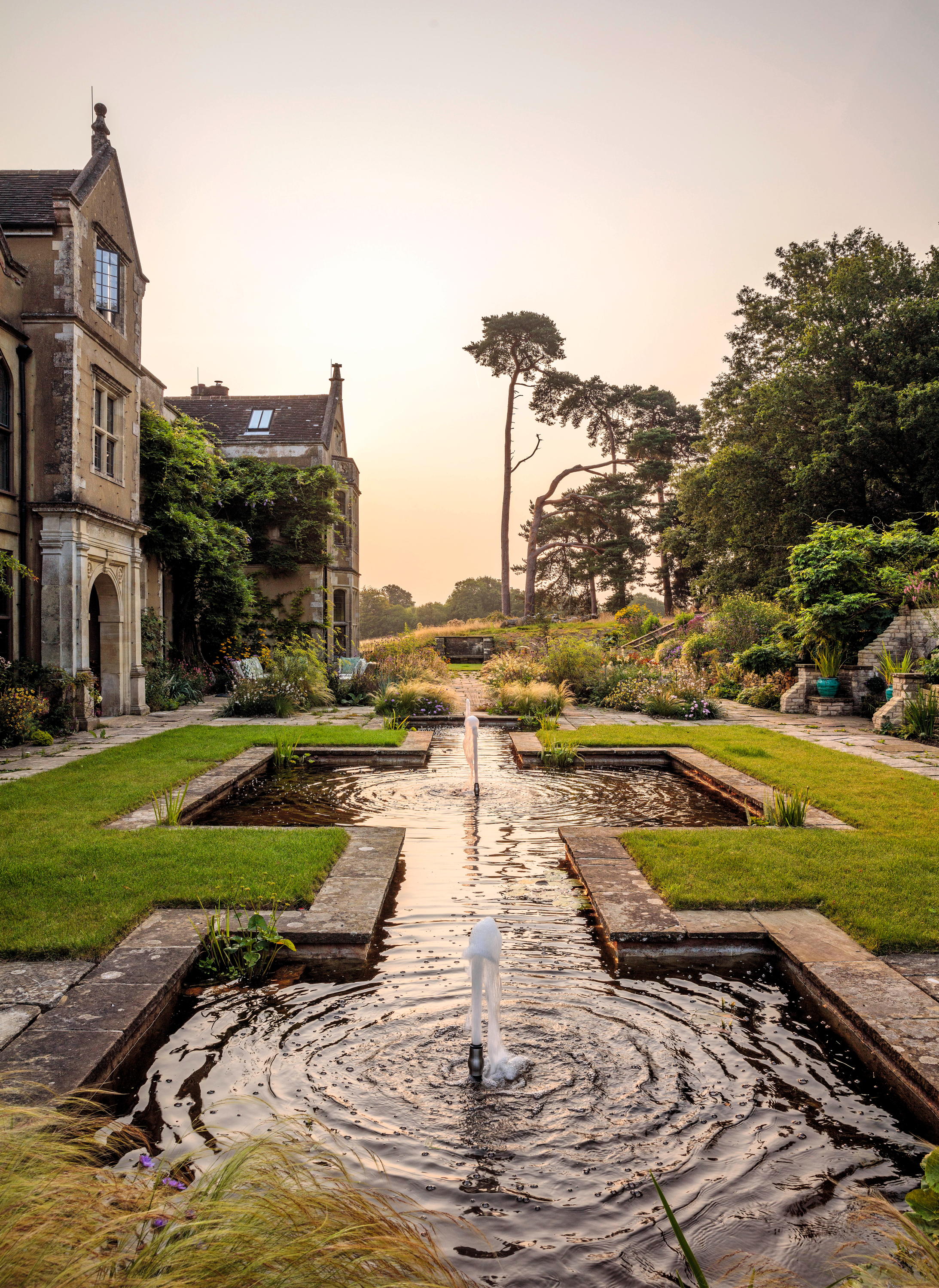
Garden restorations often reveal unexpected stories and surprises. This has certainly been the case for Mr and Mrs Mansfield at Knowle House, just outside a picturesque village in East Sussex, who acquired most of the house in 2017 and immediately began to learn about Knowle’s complicated, but intriguing past. During their painstaking and exemplary work — in house and garden — they have found family stories that bring to life the past of their home.
Perhaps most relevant for this article, they discovered the involvement of a distinguished, but little-known garden designer and plantsman of the mid 20th century, George Dillistone. He is so little known, indeed, that he does not even feature in British Gardeners, a Biographical Dictionary, compiled by Miles Hadfield and others in 1980. This notwithstanding, in 1927, Dillistone was preferred to the renowned Gertrude Jekyll for the planting at Castle Drogo in Devon (built by Jekyll’s regular partner, Edwin Lutyens). He also wrote one of the most popular gardening books of the inter-war years, published in 1920, to which he gave the endearing title The Planning & Planting of Little Gardens.
Dillistone was commissioned to work at Knowle in the late 1920s by then owners Joseph and Gladys Benskin and it is with them that the story of the garden today really begins. Joseph’s family owned Benskins brewery; Gladys was the heiress of her father’s fortune made in South America. Knowle came to her from her first husband, Raymond Hamilton-Grace, whose family had been at Knowle since 1833. Raymond was killed in action in 1915 and Gladys married Benskin in 1919.
It is likely the commission came when Dillistone, a leading expert on irises, was working for Robert Wallace and Co, a firm of fashionable landscapers based in Tunbridge Wells, Kent. If Dillistone learnt his landscape architecture at Wallace, he had a distinguished family pedigree in horticulture, coming from a long line of Suffolk nurserymen. It was his father, Ezekiel, who bred the famous ‘Sturmer Pippin’ apple presented to the Horticultural Society in 1827.
In front of the long south-facing façade of Knowle House, Dillistone inserted a formal garden with all the characteristics of the inter-war period: a formal pool, Yorkstone-paved paths and topiary mounds, all decorated with rose and mixed flowerbeds. The composition skilfully overcame the limitations of the long narrow space available between the house and a long bank facing it, which Dillistone drew into the design with retaining dry-stone walls of oolitic limestone brought specially from the Cotswolds.
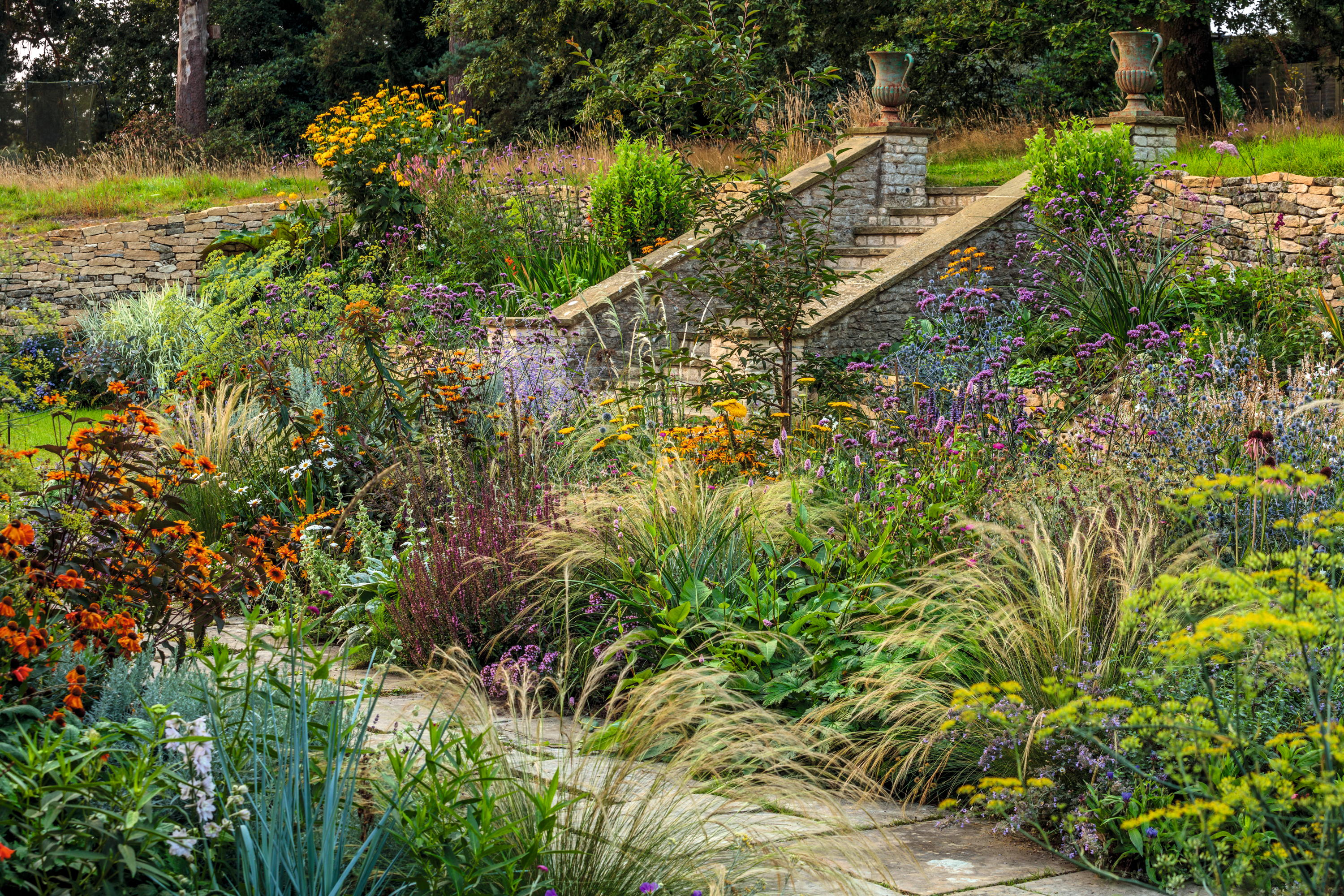
One of a pair of steps that formed part of the original George Dillistone design commissioned in the late 1920s.
At either end, he added imposing flights of steps and, in the centre, a Lutyens-esque central arched recess over a small shady pool into which there was a gentle flow of water. The new garden contained subtle features that exemplified the craftsmanship of the time, such as the special stone planters for irises and water lilies he built into the corners of the main pool.
Gladys was the driving force. She was a knowledgeable plantswoman who had a rose named after her, ‘Gladys Benskin’, which was bred by George Dickson and introduced in 1929. As well as Dillistone’s formal garden, she developed a thriving walled garden and created a water garden hidden away in woods at a distance from the house. She also opened Knowle in aid of the National Garden Scheme, from 1938 until 1972, with only a break during the Second World War.
Exquisite houses, the beauty of Nature, and how to get the most from your life, straight to your inbox.
Gladys died in 1978, at which point Knowle’s fortunes changed dramatically. The house and its estate were sold in a series of lots, which saw the house being divided into three dwellings for which planning permission had been granted. Fortunately, Dillistone’s formal garden was protected by a covenant that stated it could not be divided and must be shared. It would appear that this sharing arrangement meant that no one took responsibility and, when the Mansfields arrived in 2017, the garden had seen many years of steady decline. At first, they focused on the interiors of the two portions of the house they had acquired, to which they were able to add the third portion in 2023 when it became available, and, in the same year, they set about beginning restoration of the garden.
A post shared by Clive Nichols (@clivenichols)
A photo posted by on
Their work was greatly helped by Gladys’s granddaughter Elisa Segrave, a journalist and writer who had fond memories of her grandmother’s home and garden. In 2013, she published a memoir of her complicated mother, Anne, the only surviving child of Gladys and her first husband, Hamilton-Grace. Titled The Girl from Station X, the book revealed Anne’s hitherto unknown work during the war at Bletchley and Bomber Command, but also contains many references to happy times at Knowle: ‘From when I was a very small child I loved my grandmother’s house, Knowle… I loved her garden with its row of white rose trees she called “The Bridesmaids”, her big greenhouse with its rich scents and damp heat in winter, her banana tree that she wrapped up in straw when it grew cold. I loved my grandmother’s green wooden swing by the monkey puzzle tree on which a couple of adults could sit facing each other, her sloping lawn with its low box hedges leading to the swimming pool and her old magnolia tree that bloomed there in spring, its petals like huge blobs of cream.’
As well as her personal recollections, Ms Segrave was able to help the Mansfields with archive material, about Knowle and Dillistone — of whom they had no previous knowledge. She had letters from Dillistone to her grandmother suggesting various trees for the garden; such as fastigiate Amelanchier canadensis, which the Mansfields have replanted on either side of one flight of steps. Probably most helpful was a series of photographs thought to have been taken in the 1960s, showing the garden in detail and to its full extent.
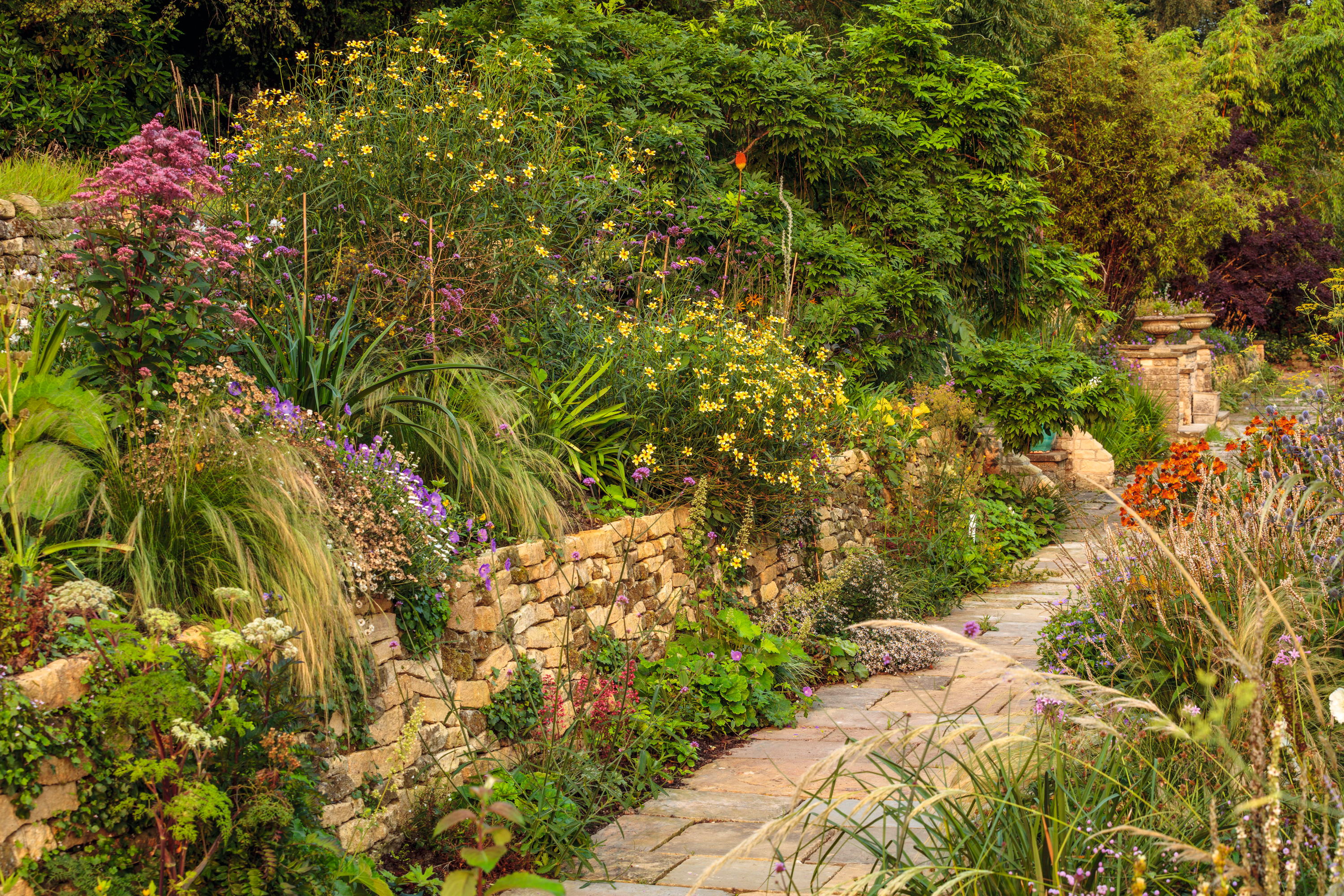
Oolitic limestone was transported from the Cotswolds to build the walls, with Helenium ‘Sahin’s Early Flowerer’, back right, and, above the wall, the yellow Bidens aurea ‘Hannay’s Lemon Drop’, with arching stems of Stipa lessingiana in the foreground.
The other key person for the restoration has been the Kew-trained head gardener and plantsman Chris Brown, who has designed and overseen the project. He found dry-stone walling expert Daniel Ritchie to unearth and rebuild the walls that a 1990 photograph showed to have almost disappeared under soil and undergrowth. He has also planned the replanting of the garden, with some features remaining faithful to Dillistone’s original and others that add a more contemporary feel and ensure the restoration is not a pastiche.
A post shared by Chris Brown (@thesussexplanthunter)
A photo posted by on
The original rose garden so loved by Gladys has been replanted with shrub varieties known to have been popular between the wars. Mrs Mansfield unearthed information about the ‘Gladys Benskin’ rose itself, which became the subject of an intriguing quest. Mr Brown contacted Dickson Roses, the original breeder based in Co Down, Northern Ireland, which said the rose was no longer in cultivation.
He persevered and found Mary Hember, a rose expert working for the Historic Rose Group, who took on the investigation and confirmed she had discovered it growing in the Europa-Rosarium in the German town of Sanger-hausen. Unfortunately, Brexit rules meant they were not able to send rooted plants, only bud wood. The first batch was not successful, a second batch has been sent and produced two roses. One will be planted at Knowle, the other will be kept in the nursery to produce more stock of this rare rose.
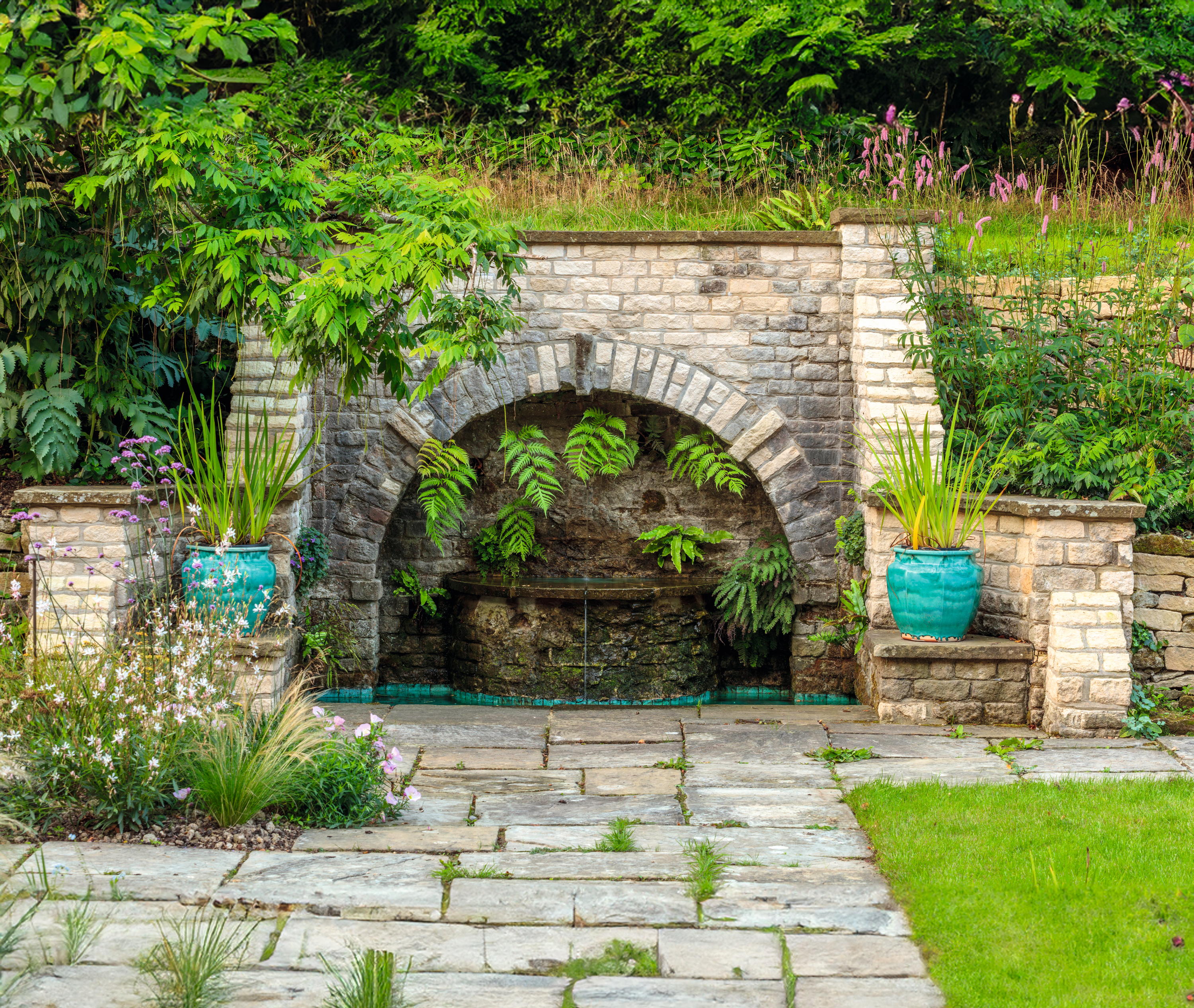
At the centre of Dillistone’s design is a Lutyens-esque recessed arch where water gently drops into a shaded pool with, on the left, Oenothera lindheimeri
The choice of new rose plants is in line with the period originals, but the style of planting — with the beds filled with spring bulbs and the roses themselves, accompanied by mixed perennials, such as salvias — is contemporary. A similar contemporary style continues in the way Mr Brown has planted the borders at the eastern end of the formal garden. They are designed to give year-round interest, from the winter shapes of perennial grasses to spring bulbs and then a summer season extending without break into the autumn with Geum ‘Totally Tangerine’, Salvia nemorosa, Persicaria bistorta, Verbena bonariensis, Achillea ‘Terracotta’ and Stipa lessingiana all prominent for successive weeks.
There is no doubt Dillistone would approve of the Mansfields’ eye for detail in their restoration, from the hard landscaping to the choice of irises for the stone planters in the pool and other plants. They have spectacularly revived the garden from a sorry state of neglect to a level of quality it has not known for probably more than 50 years and they deserve every moment of pleasure it will give them and their family in the coming years.
George Plumptre is chief executive of the National Garden Scheme
This feature originally appeared in the print edition of Country Life — here's how you can subscribe to Country Life magazine.
-
 Suit yourself: I’m a 49 year-old man-about-town and I’ve never owned a suit
Suit yourself: I’m a 49 year-old man-about-town and I’ve never owned a suitWhen Hugh Smithson-Wright turned up to Country Life's annual Gentleman's Life party sans suit, it sparked a passionate conversation about why the formal fashion just isn't for everyone.
-
 'The ugliness and craziness is a part of its charm': The Country Life guide to Bangkok
'The ugliness and craziness is a part of its charm': The Country Life guide to BangkokWhere to stay, where to eat and what to do in the Thai capital.
-
 There are a billion microbes in a teaspoon of soil. Leaving the leaves to Nature feeds and nourishes them
There are a billion microbes in a teaspoon of soil. Leaving the leaves to Nature feeds and nourishes themLeaf blowers aren't just futile and polluting — they're actively bad for the health of your garden, not to mention your mental wellbeing. Time to reach for the rake, says Isabel Bannerman.
-
 What trees taught me about perfect planting — Alan Titchmarsh
What trees taught me about perfect planting — Alan TitchmarshSense and patience is key to growing healthy trees, as a certain Mr Mackenzie showed a young Alan Titchmarsh
-
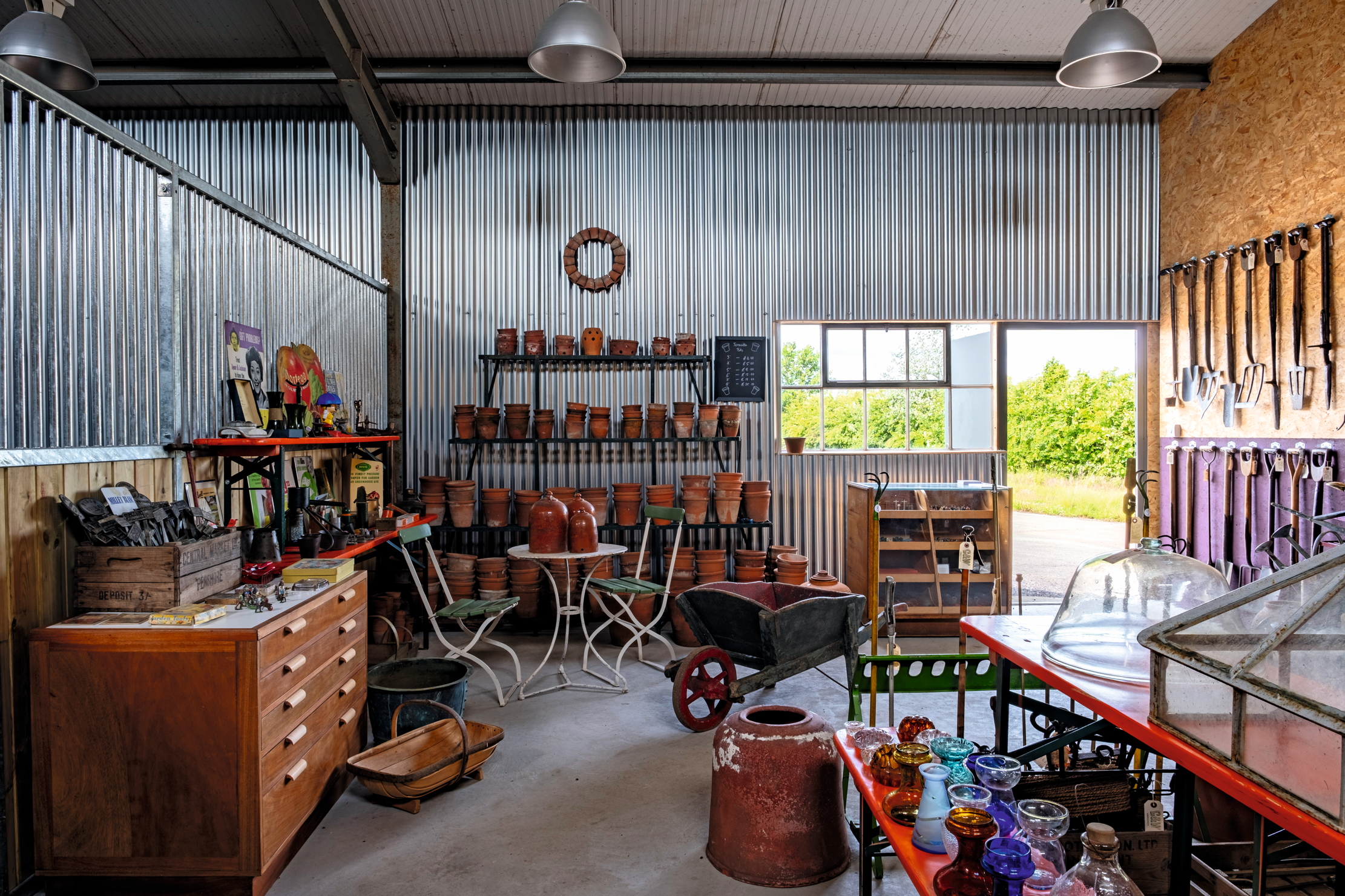 When it comes to making the perfect garden tool, the past has all the answers
When it comes to making the perfect garden tool, the past has all the answersMary Keen visits Garden & Wood, the mecca for dedicated gardeners who prefer using tools made in the 1940s
-
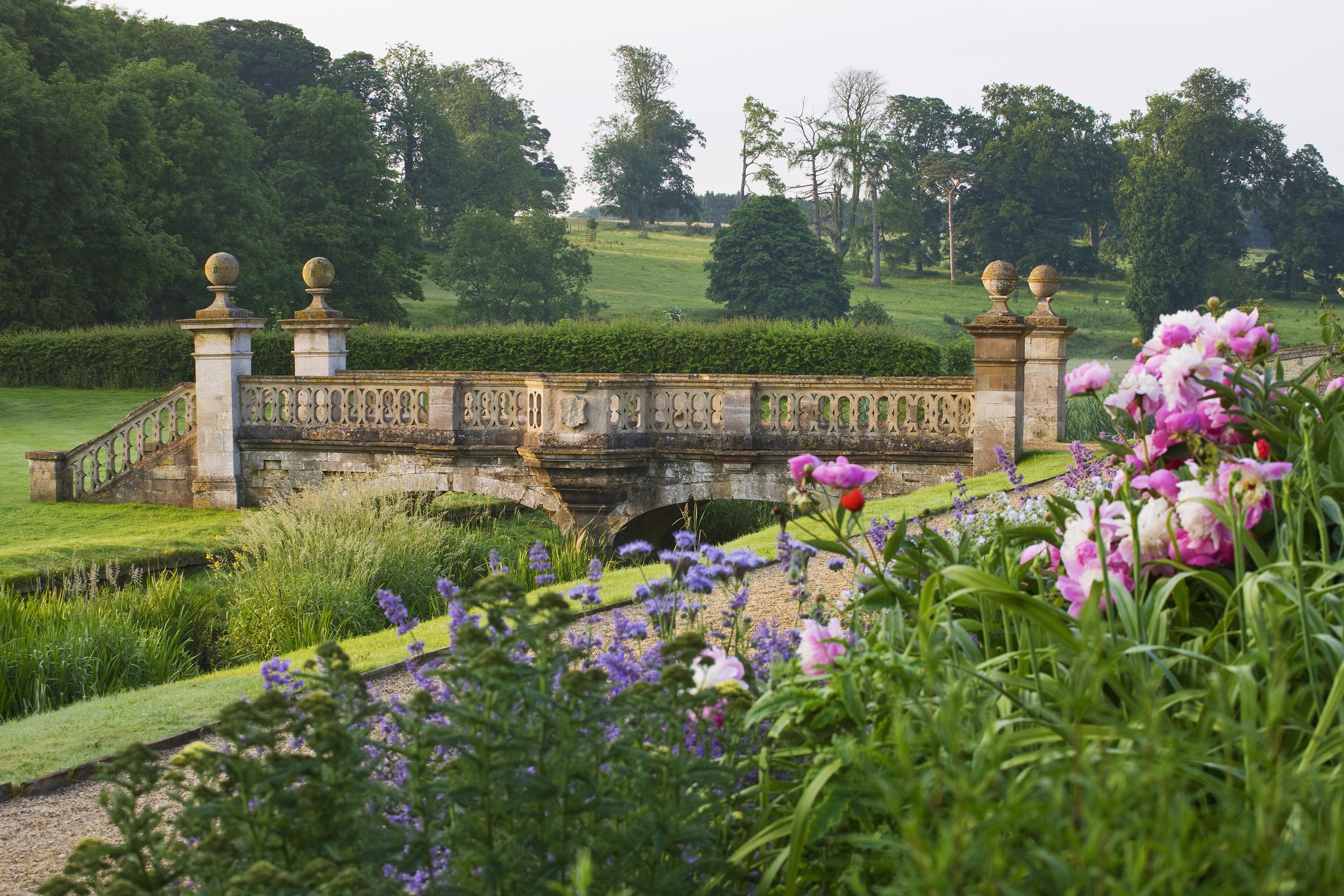 'A dream of Nirvana... almost too good to be true': The sweet peas of Easton Walled Gardens, and how you can replicate their success at home
'A dream of Nirvana... almost too good to be true': The sweet peas of Easton Walled Gardens, and how you can replicate their success at homeUrsula Cholmeley, who has spent 25 years restoring Easton Walled Gardens, recommends sowing sweet peas now for stronger plants that will better withstand the weather.
-
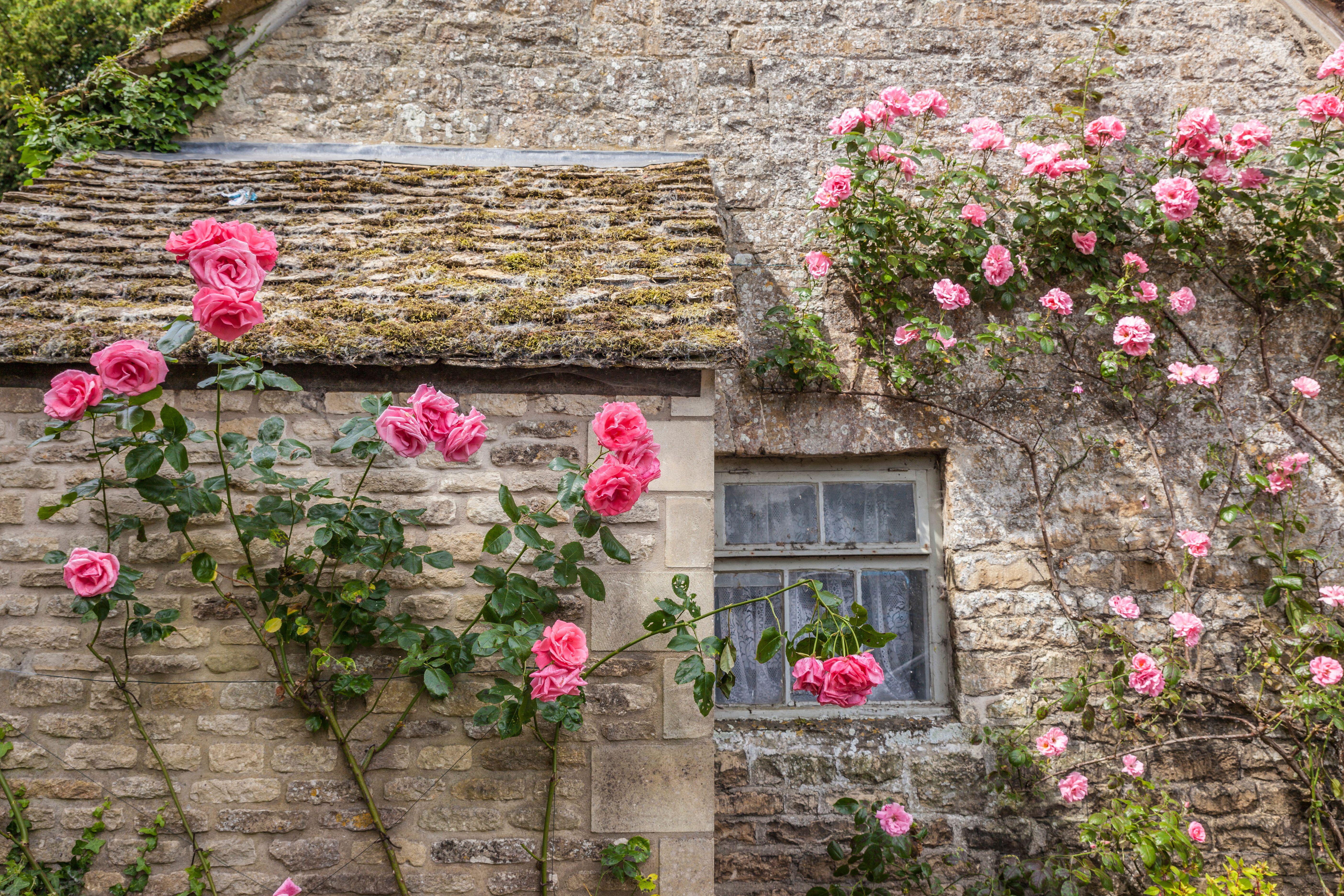 How to choose the perfect rose this bare root season
How to choose the perfect rose this bare root seasonLooks can be deceiving: bare root roses are hardier and more sustainable than potted ones, says Tabi Jackson Gee, who moved to a cottage in Wiltshire and went about finding the perfect plant. You just need patience.
-
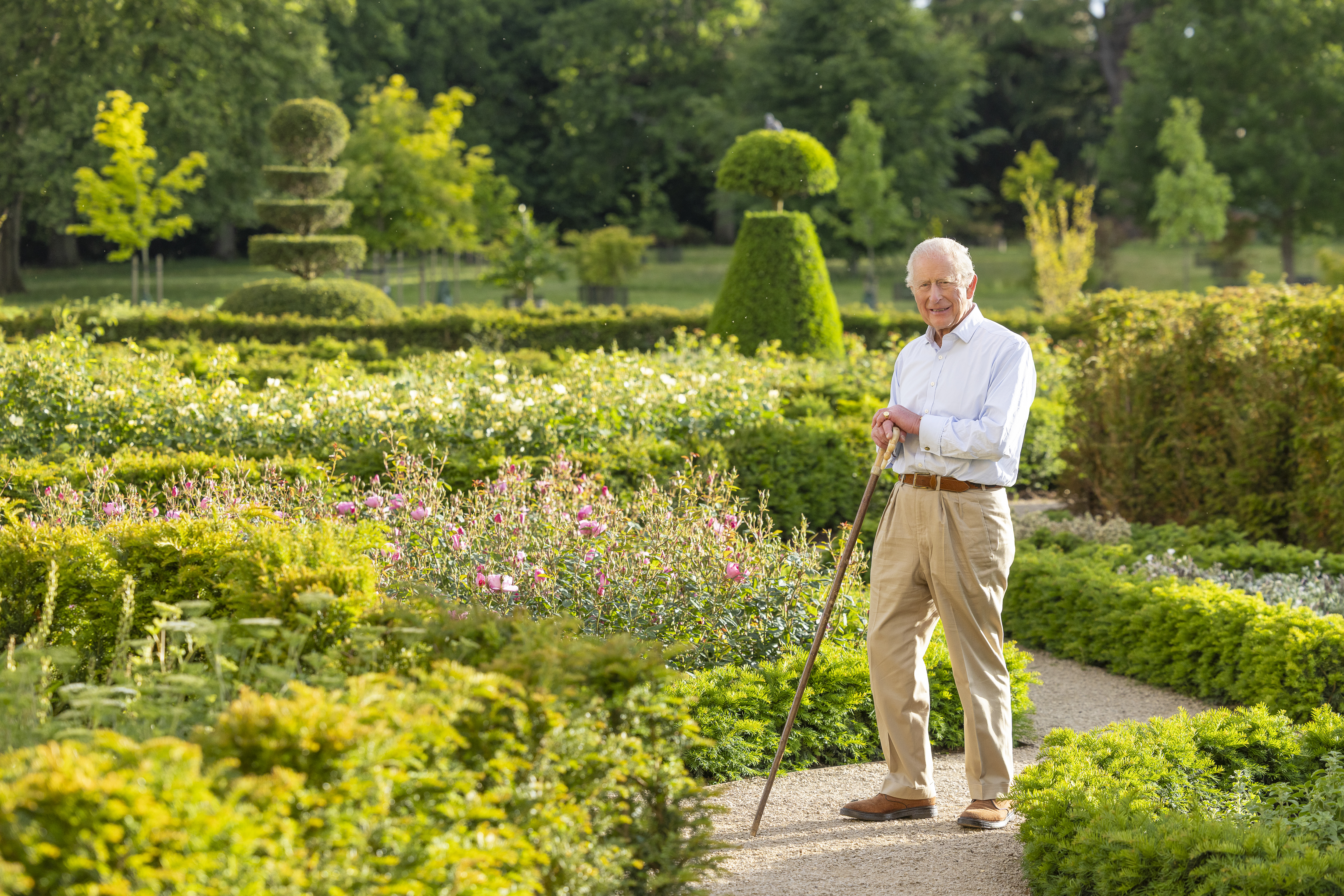 Exclusive: The King's remarkable resurrection of the gardens and parkland at Sandringham
Exclusive: The King's remarkable resurrection of the gardens and parkland at SandringhamThe King took over the running of the 21,000-acre Sandringham estate in 2017 — and in the last three years has transformed it beyond recognition.
-
 The trees that are as fine to eat as they are to look at
The trees that are as fine to eat as they are to look atMark Diacono doesn't grow many trees for the sake of the bounty they provide — but these are the notable exceptions.
-
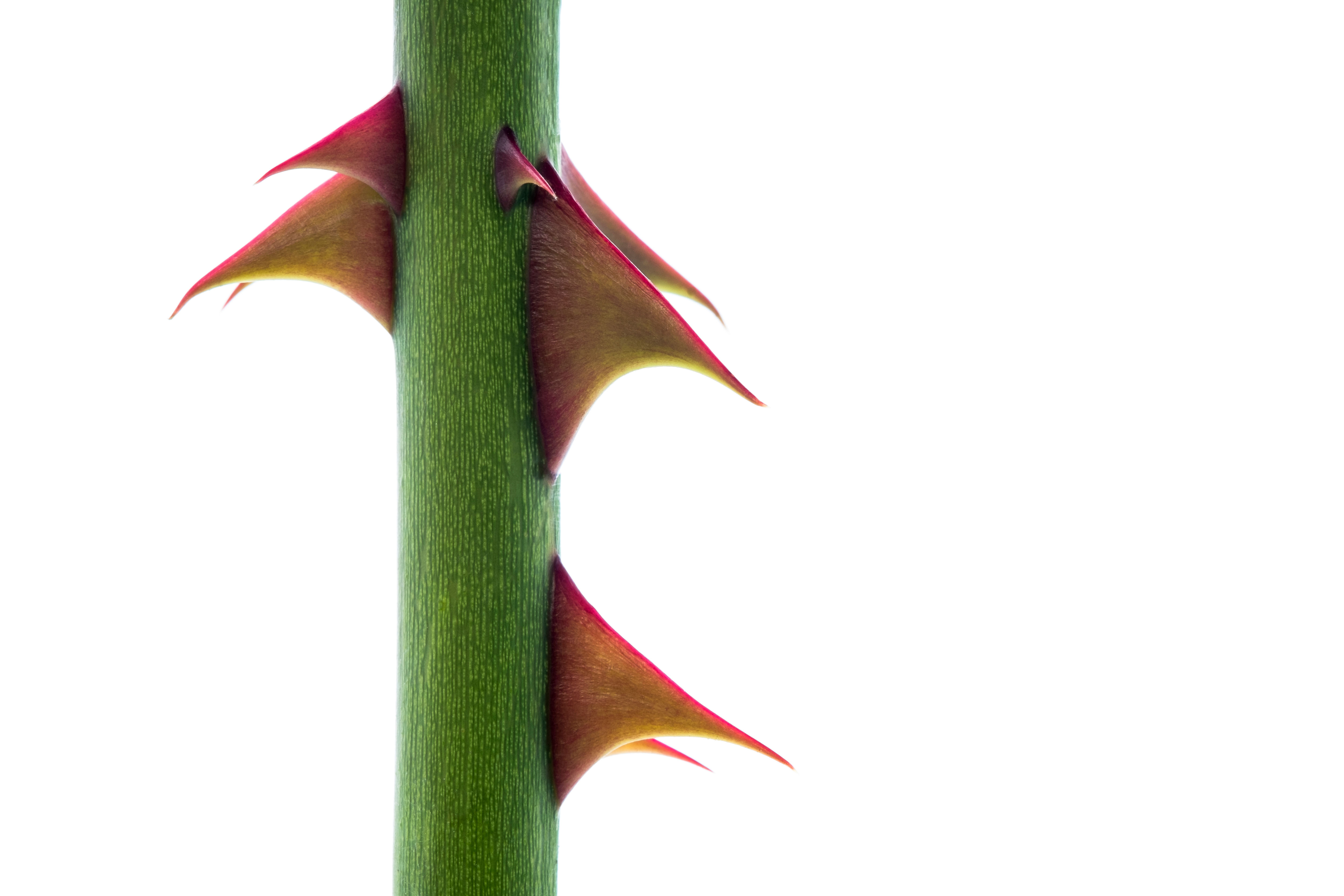 Bothered by brambles and snagged by sow thistles, but what is the point of all this thorny microaggression?
Bothered by brambles and snagged by sow thistles, but what is the point of all this thorny microaggression?Nature’s spiky deterrents — thorns, spines and prickles — may be quick to catch us out, but they can also prove to be a useful ally.